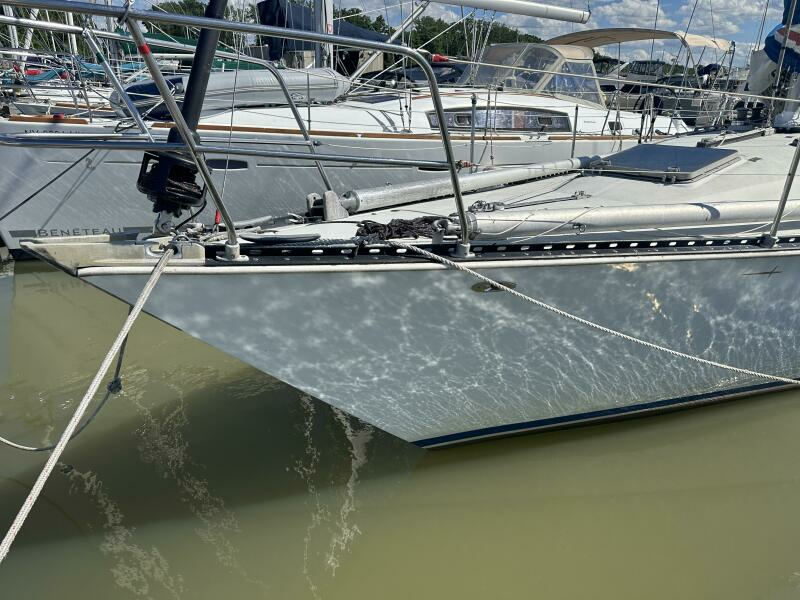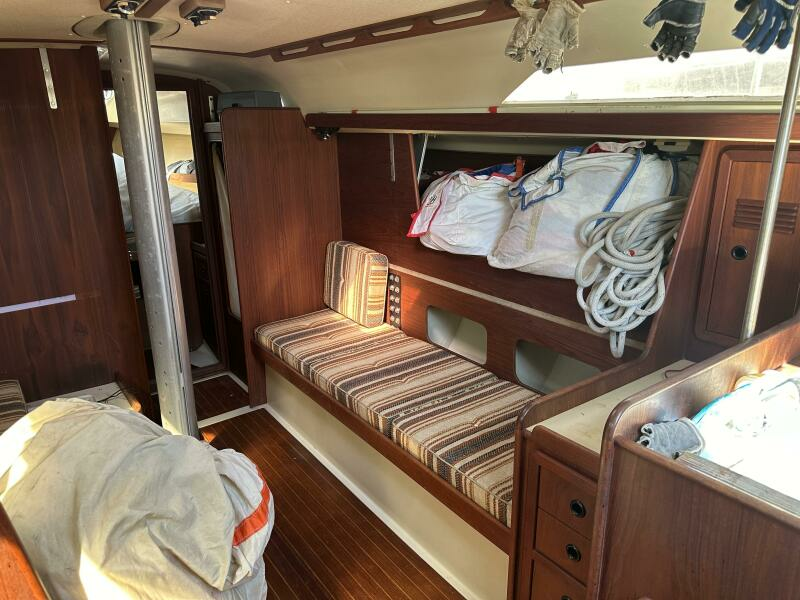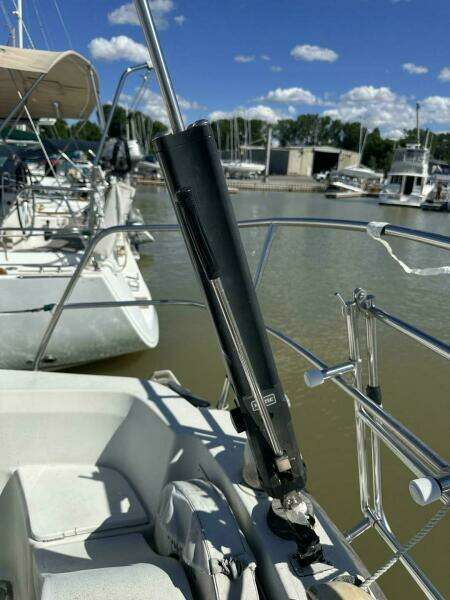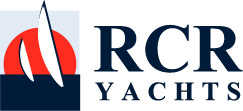1981 C&C 40'
12.19 m1981 C&C 40'
- 12.19 m
- Diesel
- Sail
- Cruiser-Racer
1981 C&C
40' (12.19 m) Wild Fire
Fresh Water. one owner Boat
| FEATURES: |
|---|
1981 C&C 40'
- 12.19 m
- Diesel
- Sail
- Cruiser-Racer
$ 19,900 USD
$ 27,346 CAD*€ 17,177 Euros*£ 14,911 GBP*
Description
This boat has good all-around performance upwind and downwind, in both light and heavy air. Despite a wide maximum beam, the boats ends are fairly well balanced, and the rudder was deep enough to stay in the water in all but a flat-out broach.
You’ll find a number of different keel and rig combinations in the C&C 40. As designed, the boat has a high-aspect-ratio fin keel drawing 7 feet, with an I (height of foretriangle) dimension of 53 feet. This configuration is reasonable for all-around performance, but is a little lacking in power for lighter air. A rig 2 feet taller was introduced, and to increase sail-carrying ability, it was usually coupled with a 4-inch deep, 300-pound lead shoe bolted to the bottom of the keel. Stability of the two versions was virtually identical: The addition to righting moment from the shoe was almost exactly offset by the heeling moment of the taller rig.
The tall-rig, deep-keel version is on the average about three seconds per mile faster than the standard rig, standard keel model.
Note: WILDFIRE has the Deep Keel and Tall Rig
The C&C 40-2 is a completely different design from the earlier C&C 40.
Disp: 17985 lbs./8157 kg.
Ballast: 8795 lbs./3989 kg.
Deeper Keel: 7.5'/2.29m
TALL RIG:
I: 55.00'/16.76m
J: 16.60'/5.06m
P: 48.50'/14.78m
E: 13.30'/ 4.05m
Tot. SA(100%): 779 sq.ft./72.37 m2
LOA40'
LOA12.19''
TypeSail
ConditionUsed
Specifications
Wild Fire
ZCC40135M81L
Sail-Used
1981
Diesel
Fiberglass
Contact
For more information about this yacht, please contact Corbo Corbishley CPYB We look forward to working with you!
For more information about this yacht, please contact Corbo Corbishley CPYB. We look forward to working with you!
For more information about this yacht, please contact Corbo Corbishley CPYB.








































